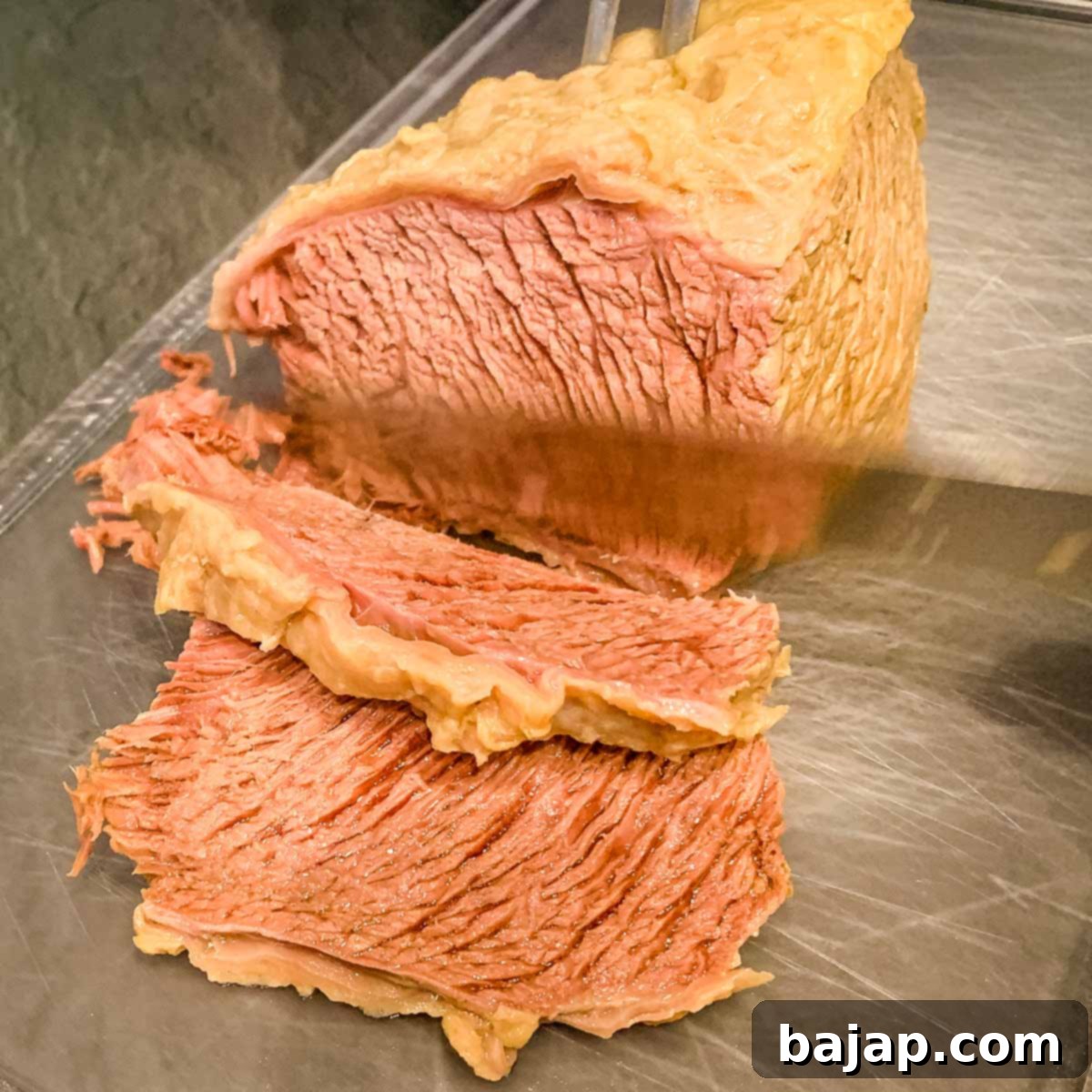Mastering Tafelspitz: An Authentic Austrian Boiled Beef Recipe for Special Occasions
Embark on a culinary journey to the heart of Austria with Tafelspitz, a dish revered as a national delicacy. More than just boiled beef, Tafelspitz is a symbol of Viennese cuisine, offering a comforting warmth and an exquisite depth of flavor that makes it a perfect centerpiece for festive gatherings, especially as a memorable Christmas main course. This guide will walk you through the traditional preparation, ensuring you can recreate this iconic dish, known for its incredible tenderness and rich broth, right in your own kitchen.
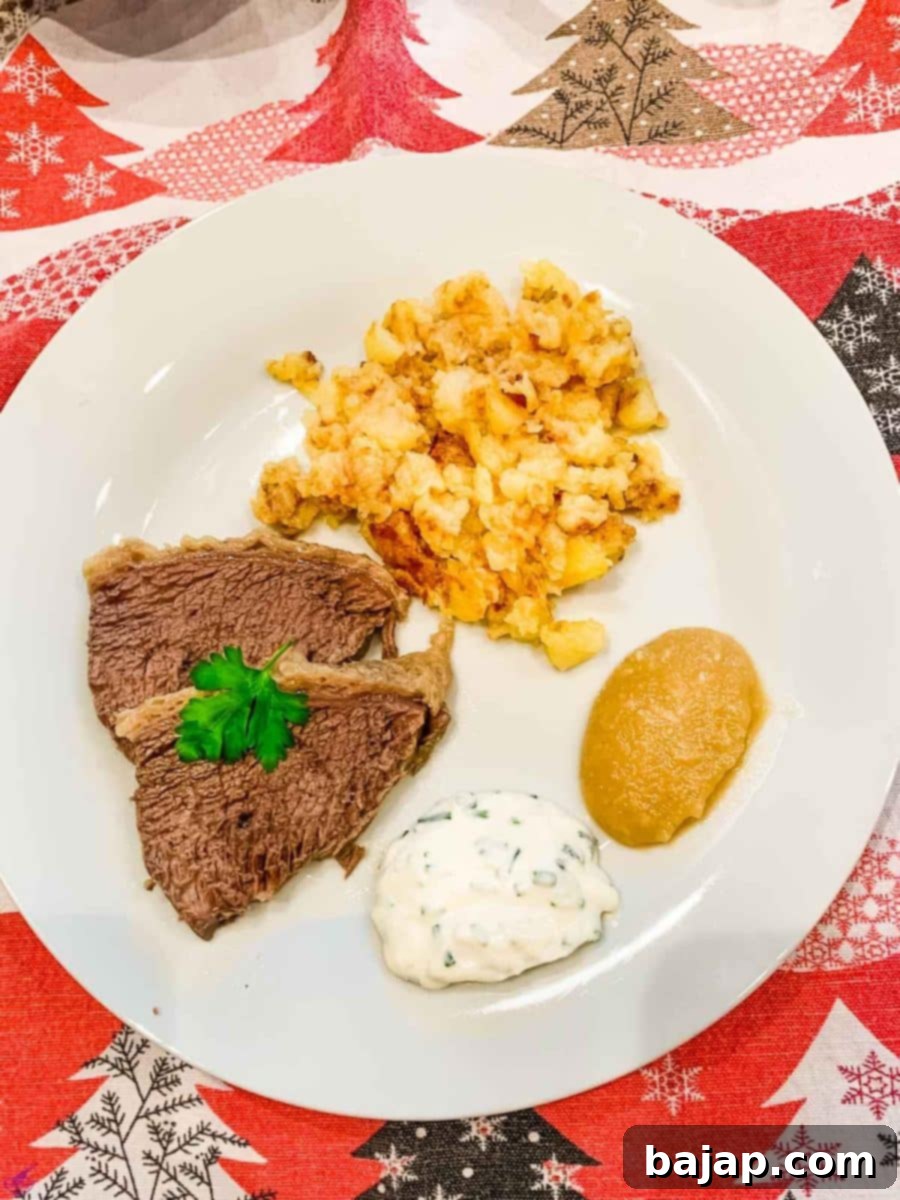
A Rich History: The Story of Austria’s Beloved Tafelspitz
Tafelspitz isn’t just a meal; it’s an institution deeply ingrained in Austrian culinary heritage, particularly in Vienna. Legend has it that Emperor Franz Joseph I was particularly fond of this dish, cementing its status in the imperial court and, by extension, throughout the country. It’s a dish that speaks of tradition, comfort, and the sophisticated simplicity of Austro-Hungarian cuisine. While it’s certainly a “delicacy” suited for special occasions—dinner parties, family gatherings, or holiday celebrations—it also represents a culinary philosophy focused on extracting maximum flavor from quality ingredients through careful, slow cooking.
If you ever find yourself in Vienna and wish to experience Tafelspitz in its most renowned setting, a visit to Plachutta in Wollzeile is highly recommended. This restaurant is synonymous with Tafelspitz, serving it with an elegance and authenticity that truly honors the dish’s legacy. Their dedication to the traditional preparation showcases why Tafelspitz remains a flagship item on the menus of Vienna’s most upmarket establishments.
Understanding the “Tafelspitz” Cut: The Secret to Tender Beef
The name “Tafelspitz” refers not only to the finished dish but also to the specific cut of beef used. This particular cut, known as “prime boiled beef” or “topside with fat cap,” is taken from the hindquarter of the beef. It forms the flat, tapering end of the beef rump and is distinguished by a characteristic layer of fat on one side. This fat cap is crucial; it slowly renders during the long simmering process, infusing the meat with moisture and rich flavor, resulting in a supremely tender and succulent texture that simply melts in your mouth. Without this essential layer of fat, it wouldn’t truly be Tafelspitz.
The meat itself is medium to long-fibered, making it ideally suited for the slow, moist-heat cooking methods employed in this recipe, such as simmering, boiling, and braising. This method breaks down the connective tissues, transforming what might otherwise be a tough cut into an incredibly tender and flavorful experience.
The Art of Boiling: A Flavor-First Approach
Preparing Tafelspitz involves a unique approach to boiling meat, distinctly different from making a standard beef broth. The goal here is to preserve the rich, inherent flavor within the beef itself, rather than extracting all its essence into the soup. This seemingly small detail is critical to achieving the authentic taste and texture of a true Tafelspitz.
Unlike traditional beef soup, where cold meat is added to cold water and slowly brought to a boil to draw out every bit of flavor into the broth, Tafelspitz demands that the meat be added only once the water is already boiling vigorously. This rapid introduction to hot water quickly seals the meat’s surface, locking in its juices and ensuring that the beef retains its incredible taste and remains exceptionally tender throughout the long cooking process. The resulting broth, while delicious, is secondary to the star of the show: the perfectly cooked, flavorful beef.
[feast_advanced_jump_to]
🥘 Ingredients
- Mirepoix (mixed vegetables for soup: carrots, parsley, celery stalk, and leek)
- Tafelspitz (Tafelspitz is part of the beef hindquarter. It forms the flat end of the beef rump, tapering to the tail. The meat is medium to long fibrous and therefore suitable for simmering, cooking, and braising.)
- Salt
- Peppercorns
- Lovage
- Stock Cube
- Garlic cloves
- Onion
See the recipe card below for exact quantities.
🍽 Equipment
- Large Soup Pot with at least 7-quart capacity
- Cutting Board
- Kitchen knife
- Strainer
🔪 Instructions
To begin your Tafelspitz masterpiece, fill a large soup pot about two-thirds full with water. Add all the aromatic ingredients—your mirepoix (carrots, parsley, celery, and leek), salt, peppercorns, lovage, a stock cube, garlic cloves, and a quartered onion—to the pot. Bring this flavorful mixture to a rolling boil.
Crucially, wait until the water is vigorously boiling before you introduce the Tafelspitz meat. As discussed earlier, this ensures the beef’s natural flavors are sealed within, creating that signature tender and juicy outcome. Once the water is boiling, carefully add the meat to the pot. Partially cover the pot with its lid, leaving it slightly ajar to allow steam to escape while maintaining a steady simmer. Let the Tafelspitz cook for approximately 2.5 hours, or until it is fork-tender.
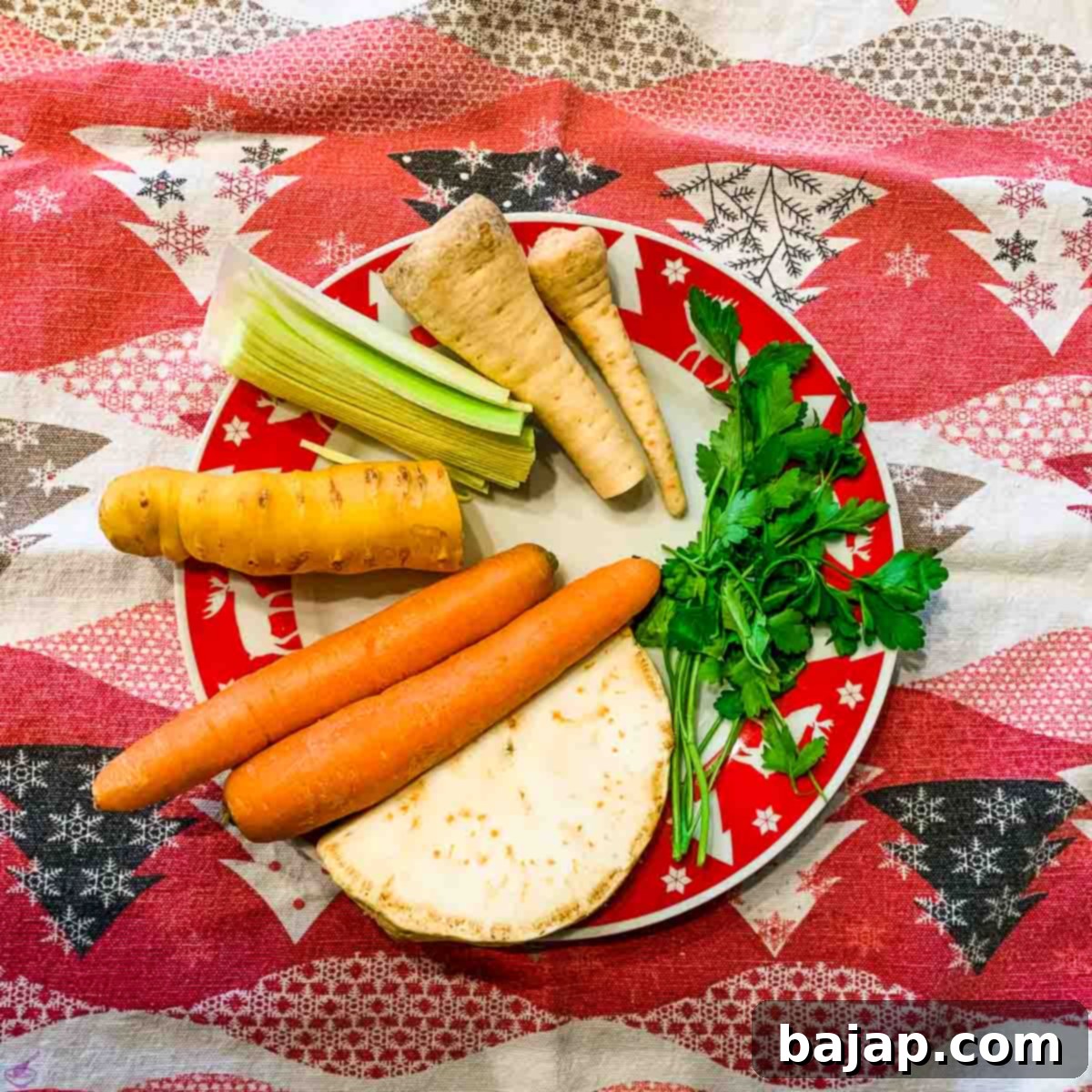
Prepare your mirepoix: a classic blend of carrots, parsley, celery stalk, and leek.
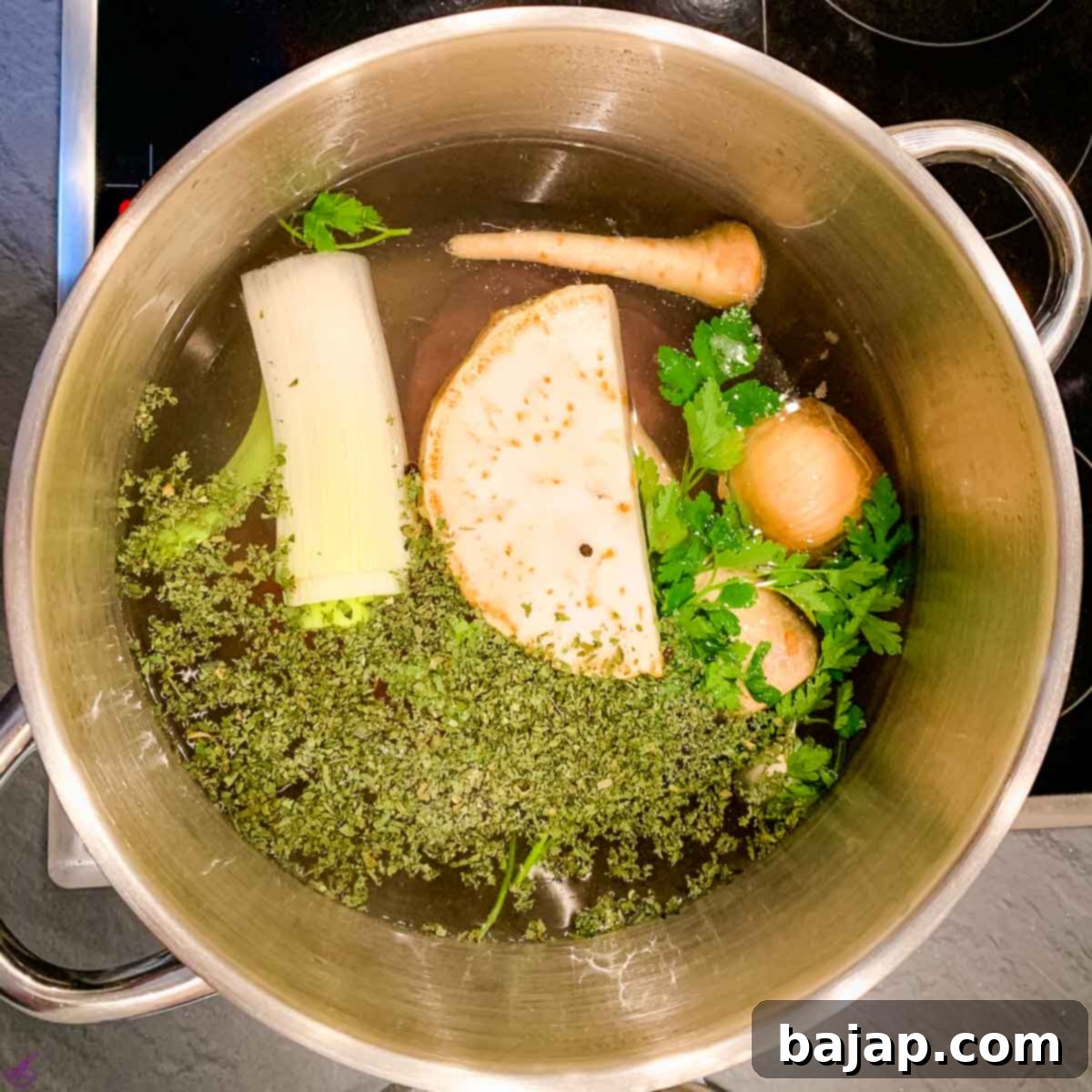
Allow the Tafelspitz to simmer gently for a full 2.5 hours.
Once the cooking time is complete and the beef is perfectly tender, carefully remove the Tafelspitz from the pot and set it aside on a cutting board to rest for a few minutes. Next, strain the exquisite broth through a fine-mesh sieve to separate it from the cooked vegetables and spices. This clear, flavorful bouillon can be served as a delightful appetizer soup before the main course.
Now, carve the cooked Tafelspitz into elegant, finger-thick slices. The meat should be so tender that it almost falls apart under the knife.
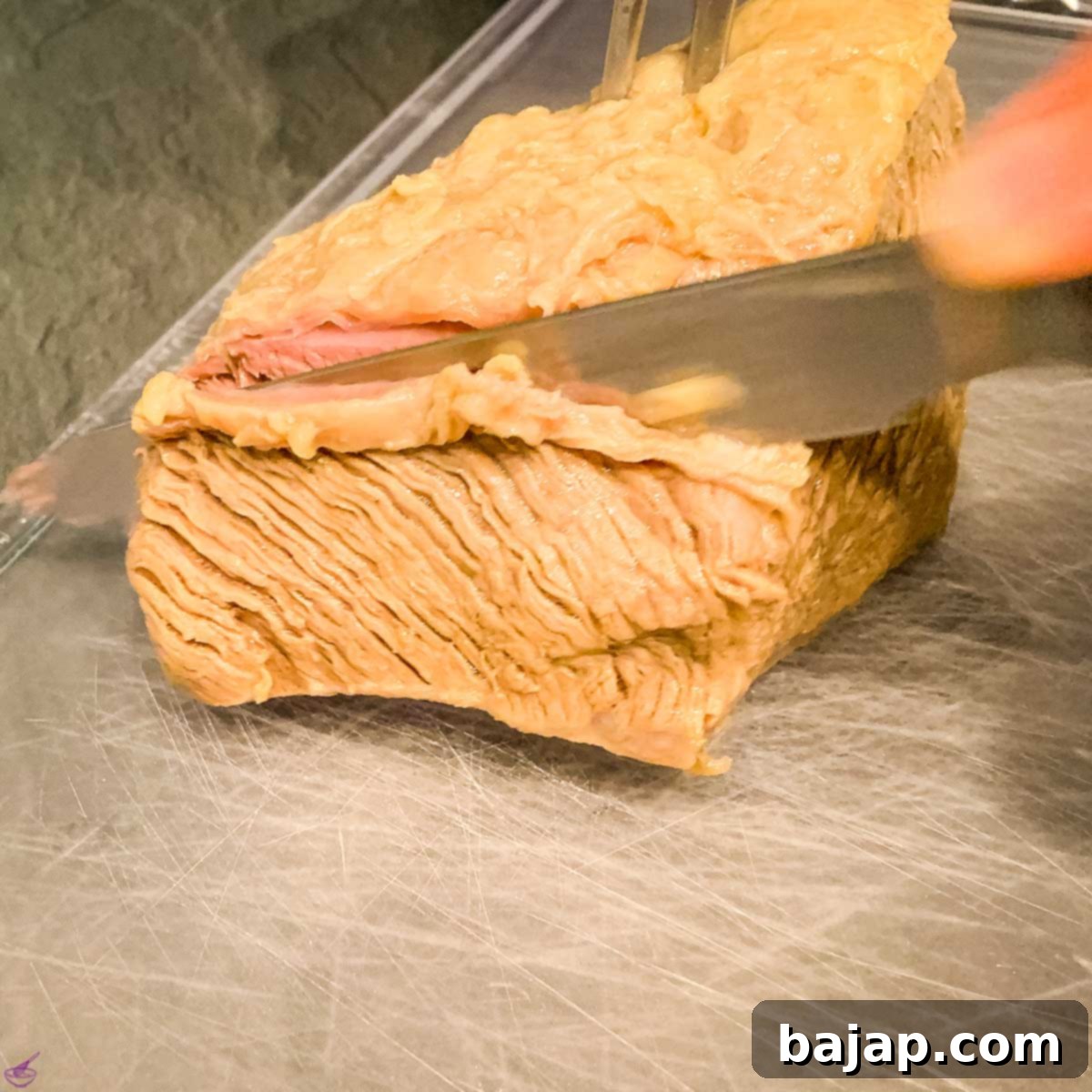
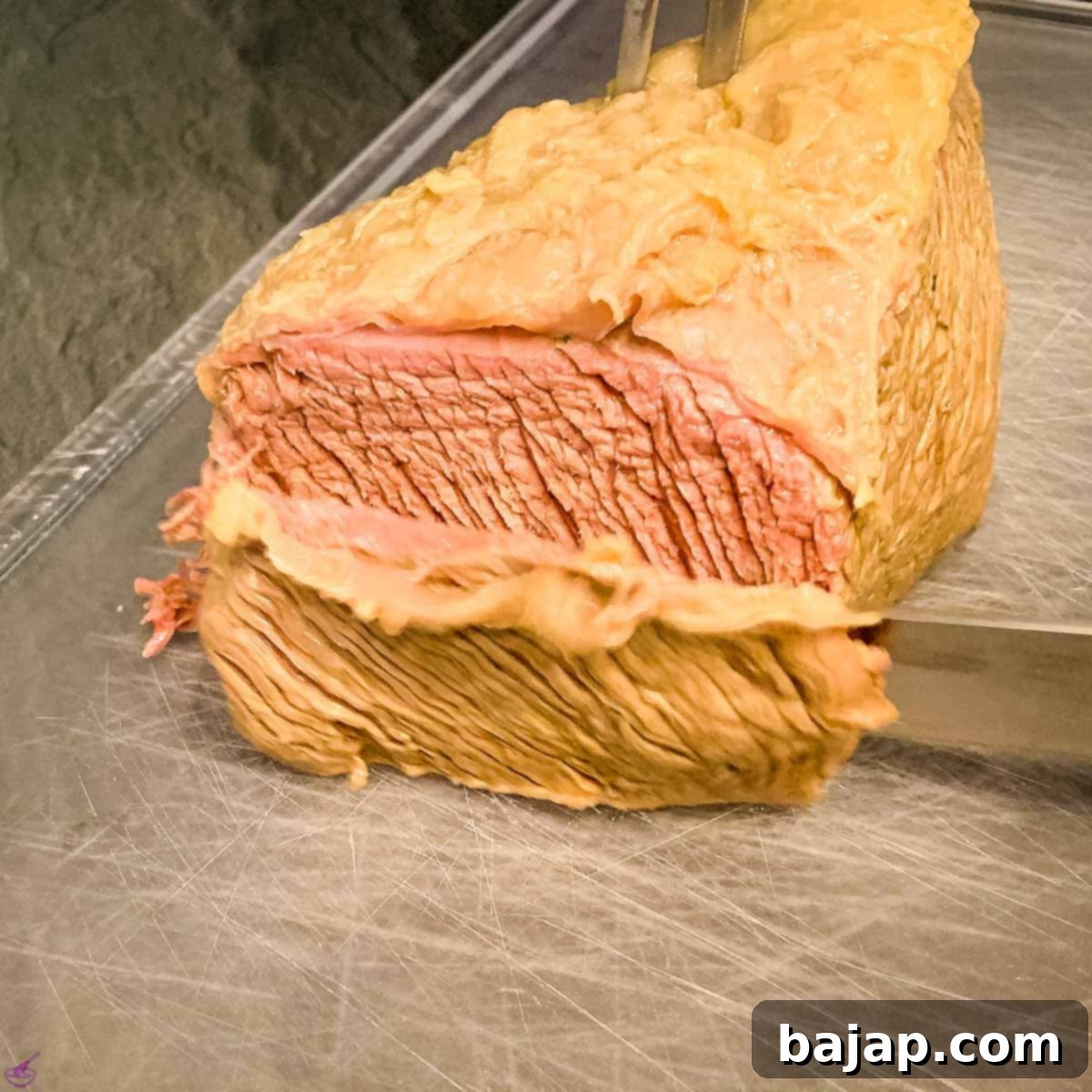
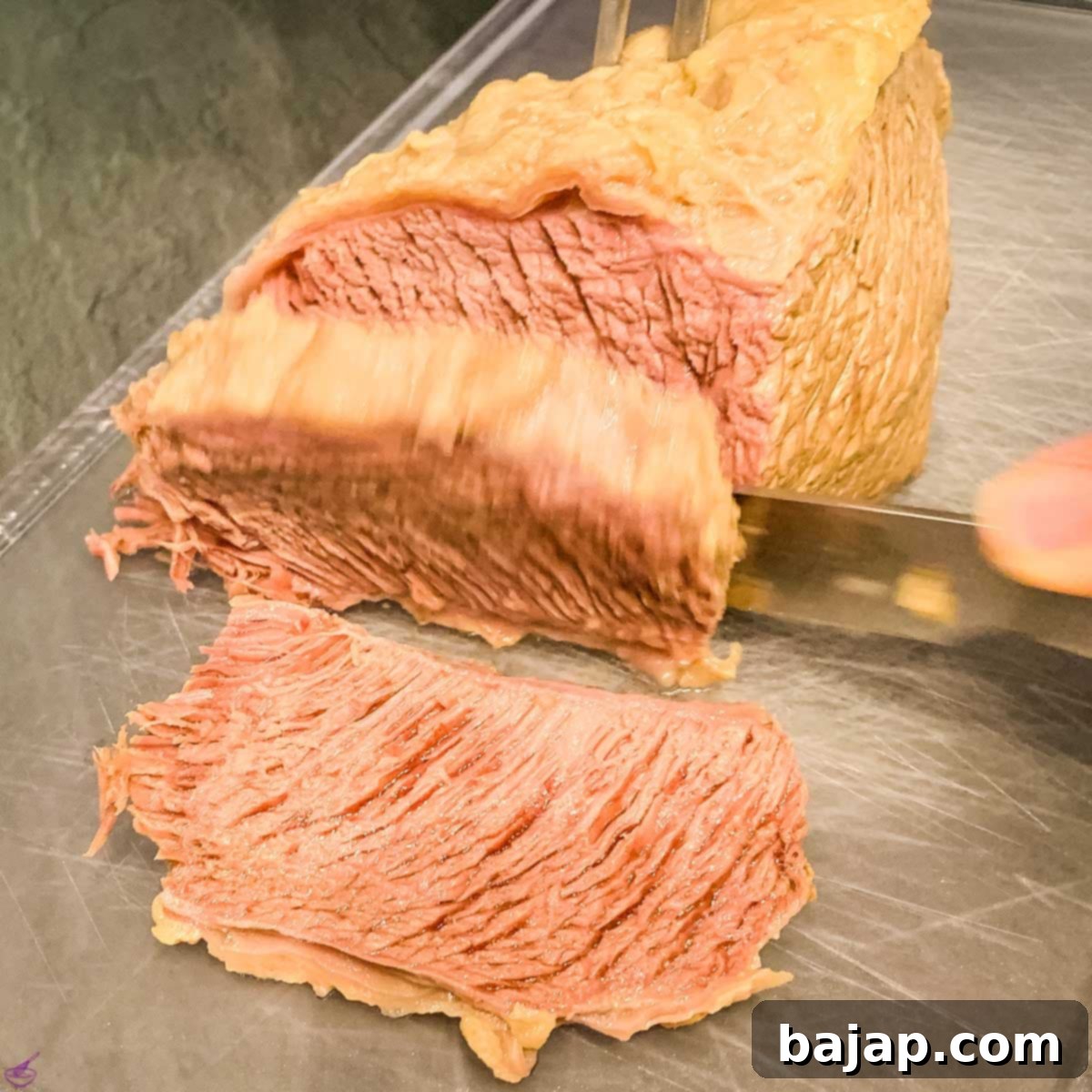
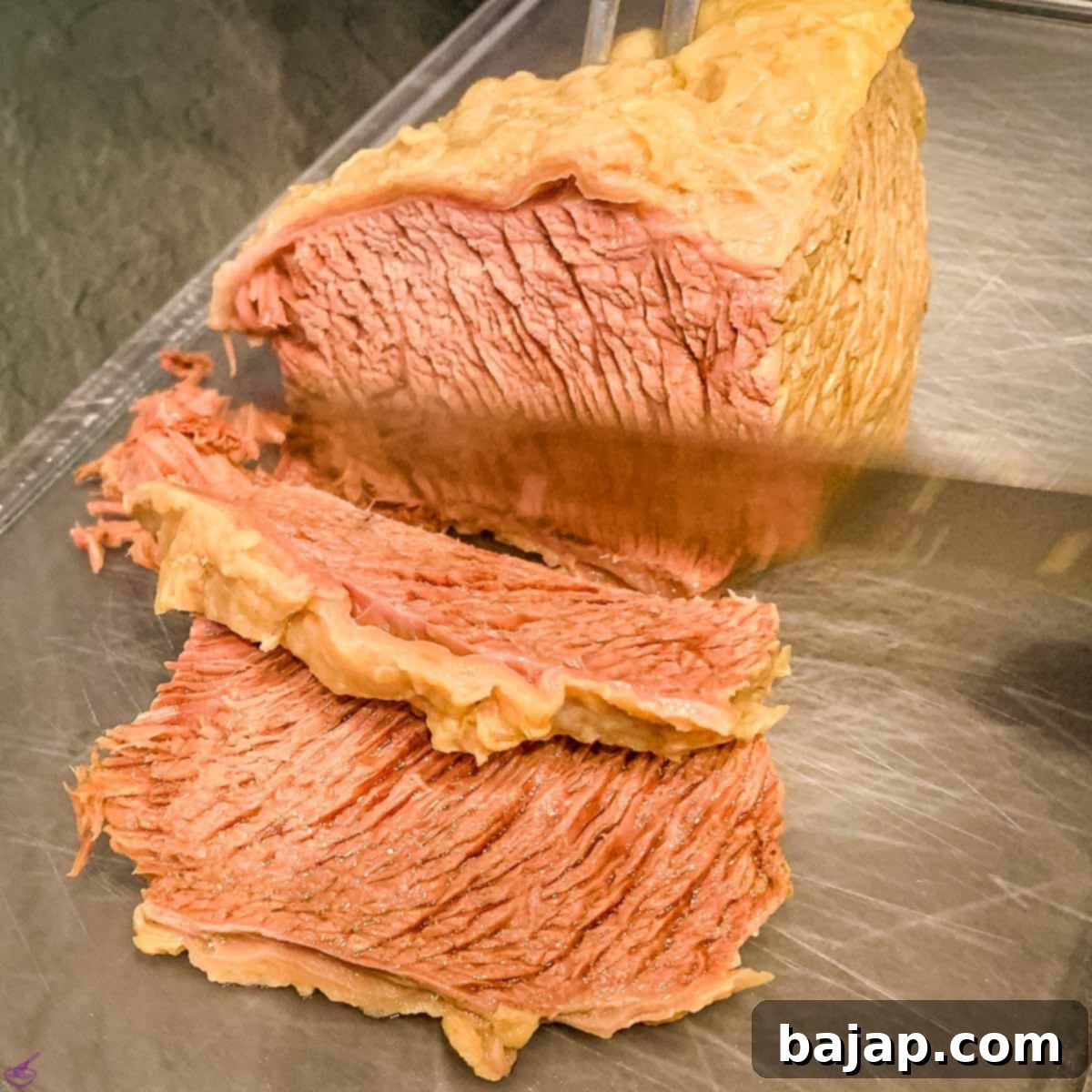
For those who appreciate the vegetables, don’t discard them! You can set aside the cooked carrots, slice them, and return them to the strained soup for a touch of sweetness and texture. The soup can be served with various additions like noodles, frittatas, liver dumplings, or semolina gnocchi—choose whatever you fancy to complement your meal. Finally, present the magnificent Viennese Tafelspitz alongside its traditional accompaniments: golden roasted potatoes (Erdäpfelschmarrn), the piquant sweetness of apple horseradish (Apfelkren), and a creamy chive sauce.
🇦🇹 If you are looking for more authentic Austrian recipes, you can find them in our Austrian recipe category. 🇦🇹
💭 Top Tips for a Perfect Tafelspitz Experience
Traditional Accompaniments with Austrian Boiled Beef
To truly embrace the authentic Austrian experience, understand how Tafelspitz is traditionally served in a Viennese restaurant. Typically, the tender slices of beef are presented in a small soup pot, still nestled in a portion of its flavorful broth. Alongside this, you will receive side dishes such as Kartoffelschmarrn (crispy roasted potatoes, sometimes referred to as pan-fried potatoes) and the essential sauces: the zesty and sweet apple horseradish (Apfelkren) and the fresh, creamy chive sauce. In some establishments, creamed spinach might be offered as an alternative or additional side. Before the main event, diners often choose a garnish for their beef bouillon, with popular choices including delicate noodles, savory liver dumplings, or classic frittatas. This layered presentation and selection of accompaniments elevate Tafelspitz from a simple meal to a cherished culinary ritual.
🙋🏻 FAQ: Your Questions About Tafelspitz Answered
For Vienna’s best boiled beef experience, I wholeheartedly recommend a visit to Plachutta Wollzeile. Their reputation for authentic Tafelspitz is well-deserved!
Traditional and highly recommended accompaniments include Erdäpfelschmarrn (roasted potatoes), a fresh Chive Sauce, and a vibrant Apple Horseradish Sauce (Apfelkren). These sides perfectly balance the rich flavors of the beef.
Tafelspitz refers to a specific cut from the beef hindquarter. It is the flat end of the beef rump, characterized by a tapering shape and a crucial layer of fat on one side. This medium to long-fibered cut is exceptionally well-suited for simmering, cooking, and braising, which is key to its renowned tenderness. Enjoy the process of cooking and savoring this traditional Viennese delicacy!
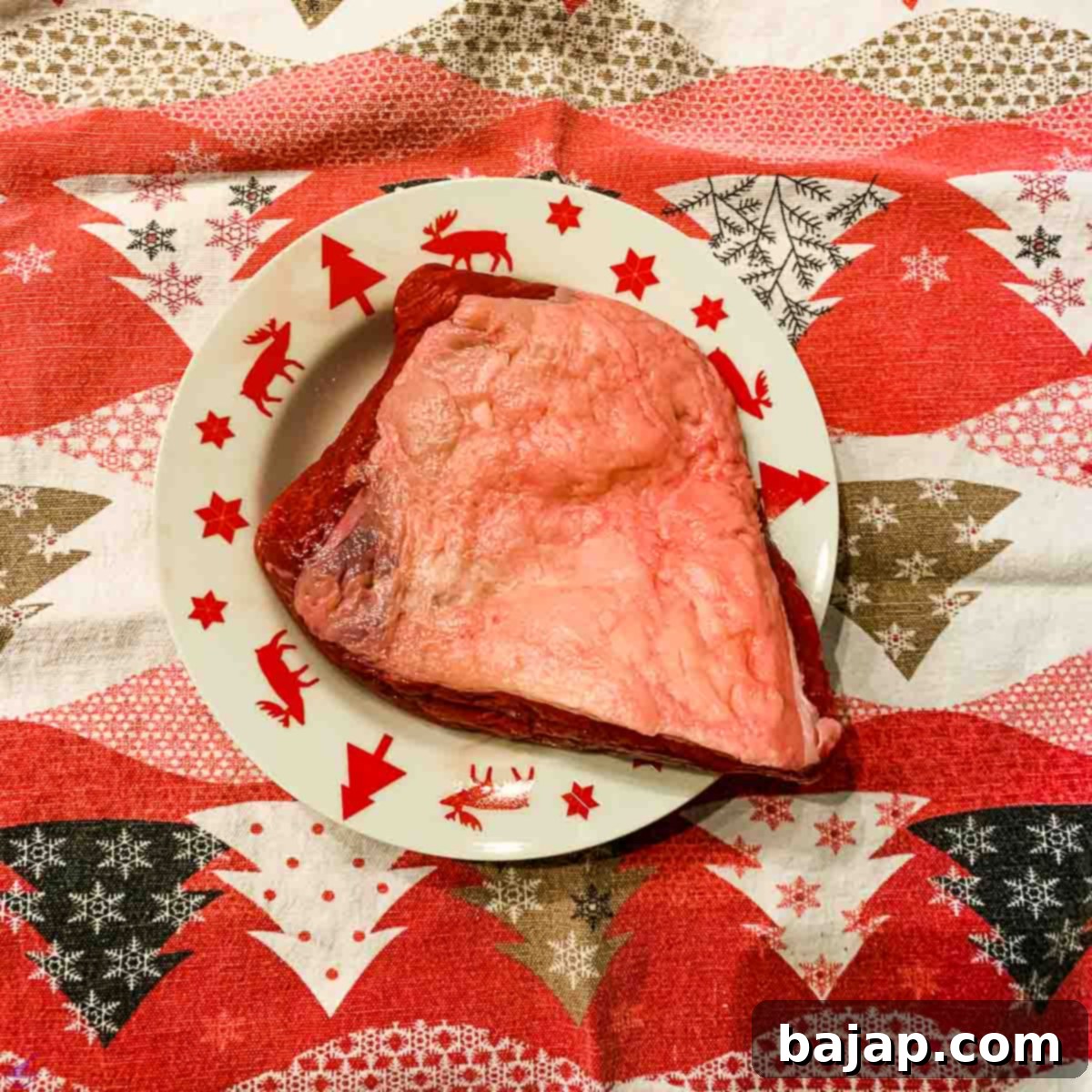
The Tafelspitz cut, a crucial part of the beef hindquarter, is renowned for its suitability for slow cooking.
Storing Cooked Tafelspitz: Food Safety Guidelines
Ensuring the safety and quality of your delicious Tafelspitz leftovers is paramount. The USDA recommends refrigerating cooked beef promptly and consuming it within 3 to 4 days when stored at 40°F (4°C) or less. While refrigeration slows bacterial growth, it does not halt it entirely. Understanding the difference between pathogenic and spoilage bacteria is key:
- Pathogenic bacteria are the silent threat, causing foodborne illness without necessarily affecting the food’s taste, smell, or appearance. These grow rapidly in the “Danger Zone,” a temperature range between 40°F and 140°F (4°C and 60°C).
- Spoilage bacteria, on the other hand, are responsible for unpleasant odors, tastes, and textures. While most spoiled food wouldn’t be eaten, and likely wouldn’t cause illness if it were, certain pathogenic bacteria like Listeria monocytogenes (Lm) can thrive even at cold refrigerator temperatures and can cause serious illness.
Never taste food to determine its safety. To effectively prevent food spoilage and reduce the risk of foodborne illness, always adhere to the USDA’s FOUR steps to Food Safety: Clean, Separate, Cook, and Chill. Keep cold food at or below 40°F (4°C) and hot food at or above 140°F (60°C) to keep it out of the Danger Zone.
Source: ask.usda.gov
📖 Recipe
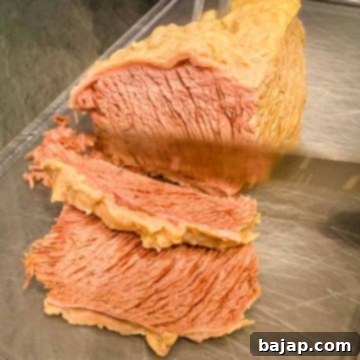
Tafelspitz – Austrian Prime Boiled Beef
By Nora
Save RecipeSaved!
Pin Recipe
Equipment
-
Large Soup Pot
-
Cutting Board
-
Kitchen knife
-
Strainer
Ingredients
- 1 bunch Mirepoix
- 1.3 lb Tafelspitz Tafelspitz is part of the beef hindquarter. It forms the flat end of the beef rump, tapering to the tail.
- 1 teaspoon salt
- 8 pcs peppercorns
- 1 teaspoon lovage
- 1 stock cube
- 1-2 cloves garlic
- ¼ Onion
Instructions
-
Fill a large soup pot ⅔ full with water.
-
Add all the other ingredients (except the meat) and bring the water to a boil.1 bunch Mirepoix, 1 teaspoon salt, 8 pcs peppercorns, 1 teaspoon lovage, 1 stock cube, 1-2 cloves garlic, ¼ Onion
-
Once the water boils, add the meat and let it cook for 2.5 hours. Put the lid of the pot at an angle during this process.1.3 lb Tafelspitz
-
After 2.5 hours, strain the soup to separate it from the greens.
-
Place the cooked Tafelspitz on a cutting board and slice it into finger-thick slices.
Notes
Use the cooked soup right away as an appetizer.
The delicious broth can be served immediately as an appetizer. You can enjoy it plain or with additions like noodles, frittatas, liver dumplings, or semolina gnocchi – choose what you prefer!
What to serve with Tafelspitz?
- Erdäpfelschmarrn (roasted potatoes)
- Chive Sauce
- Apple Horseradish Sauce
Nutrition values are estimates only, using online calculators. Please verify using your own data.

🇦🇹 You Might Also Like These Austrian Delicacies
- How to Make Apfelkren – Austrian Horseradish Sauce
- How to Make Delicious Homemade Chive Sauce in 5 Minutes
- Fresh Strawberry Sponge Cake
- Austrian Erdäpfelschmarrn – Grated Pan Fried Potatoes
⛑️ General Food Safety Guidelines
- Always cook food to its minimum safe internal temperature to destroy harmful bacteria. For beef, ensure it reaches at least 165 °F (74 °C) if reheating or as specified for your cut.
- Prevent cross-contamination by never using the same utensils or cutting boards on cooked food that have previously touched raw meat without thorough washing.
- Always wash your hands thoroughly with soap and water after handling raw meat.
- Avoid leaving perishable food, including cooked meat, sitting out at room temperature for extended periods (generally no more than two hours).
- Never leave cooking food unattended on the stove or in the oven to prevent accidents and overcooking.
- When cooking with oils, choose those with a high smoke point to avoid breaking down harmful compounds and ensure healthier cooking.
- Ensure good ventilation when using a gas stove to prevent the buildup of indoor air pollutants.
For further comprehensive information on safe food handling practices, please refer to the Safe Food Handling – FDA website.
